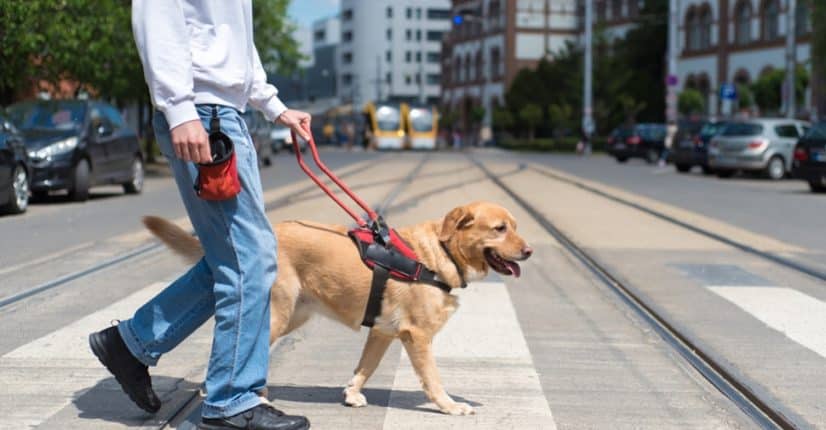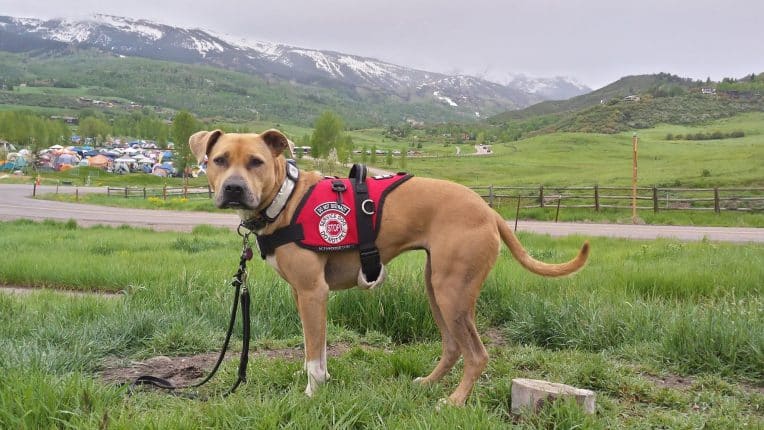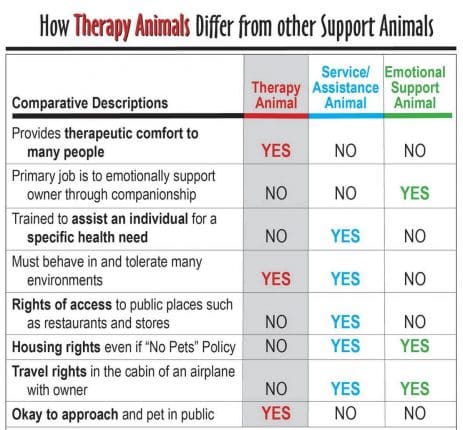
Therapy Dogs, Service Dogs, and Emotional Support Animals
Therapy Dogs receive extensive training but have a completely different type of job from service dogs. Their responsibilities are to provide psychological or physiological therapy to individuals other than their handlers; who are usually their owners. These dogs have stable temperaments and friendly, easy-going personalities. Typically, they visit various institutions like hospitals, schools, hospices, psychotherapy offices, nursing homes and more. Unlike service dogs, therapy dogs are encouraged to socialize and interact with a variety of people while they’re on-duty. It is important to note that, despite thorough training and certification, they do not have the same jobs or legal designation as service dogs. The handlers or owners of therapy dogs do not have the same rights to be accompanied by these dogs in places where pets are not permitted.


Service Dogs are individually trained to perform tasks and do work that mitigate their handlers’ disabilities. Working as part of a team with their disabled partners, service dogs help them attain the safety and independence from which their handlers’ disabilities would otherwise limit them. These tasks can include things like pulling a wheelchair, guiding people who are visually impaired, alerting a person who is having a seizure, or even calming a person who suffers from Post-Traumatic Stress Disorder. The tasks a service dog can perform are not limited to this list. However, the work or task a service dog does must be directly related to the person’s disability. Service dogs may accompany persons with disabilities into places that the public normally goes. The Americans with Disabilities Act (ADA) protects the rights of people with disabilities to be accompanied by their service dogs in public places.
There is no certification or national registrations for legitimate service dogs. People with trained service dogs will not have them in a purse or grocery cart. Many states are cracking down on service dog fraud.


Emotional support animals are a companion animal (typically a dog or cat) that provides a therapeutic benefit to its owner through companionship. The animal provides emotional support and comfort to individuals with psychiatric disabilities and other mental impairments. The animal is not specifically trained to perform tasks for a person who suffers from emotional disabilities. Emotional support animals are NOT recognized by the American Disabilities Act (ADA). Unlike a service animal, an emotional support animal is not granted access to places of public accommodation. Under the federal Fair Housing Act (FHA), an emotional support animal is viewed as a “reasonable accommodation” in a housing unit that has a “no pets” rule for its residents.




